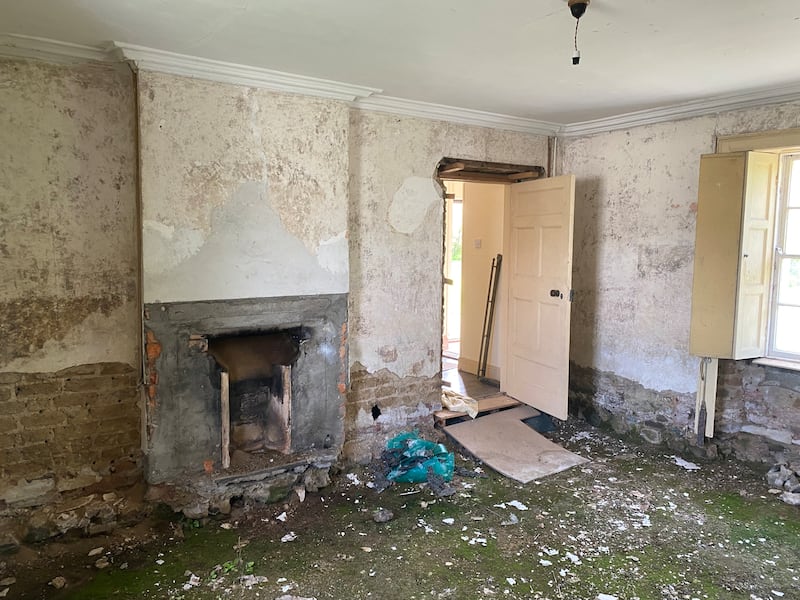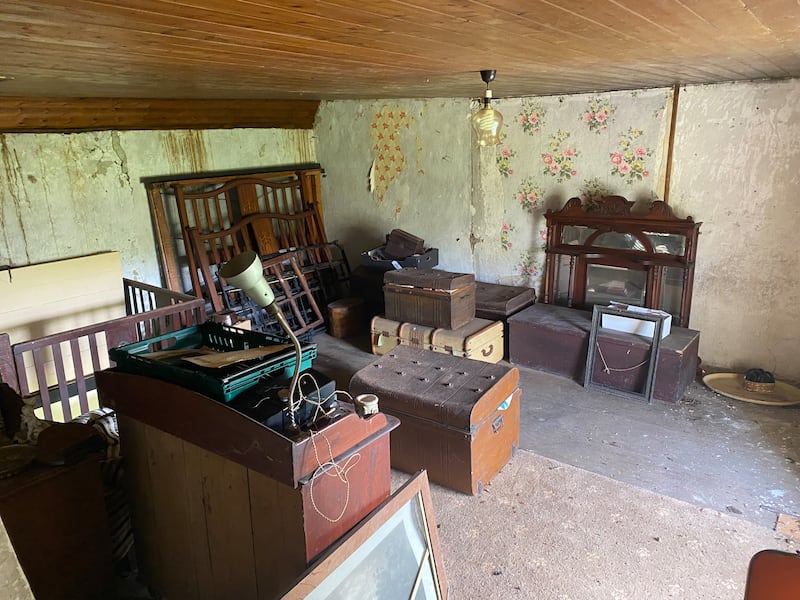When leaving rural Wexford at 17 to start life as an almost adult in Dublin, I would have been very surprised at the suggestion of this article ever being written.
Growing up on an old farm at the end of a lane – at the end of an even longer lane which is off a rural road – provided great freedom as a kid, but as a teenager, it felt short of the options my peers had in Wexford town, Rosslare or Kilmore.
Moving away for college was exciting and life in Dublin wound up suiting me well for most of the following two decades. I made good friends, found reasonable places to live in and a job I don’t hate. But there is nothing like having to spend a prolonged period living and working in a rented, shared, two-bed apartment at the height of a pandemic to get you thinking about how things could be that bit better.
Prior to those full-on Covid-19 days, I had been scouting around for a place to buy within striking distance of Dublin city centre, albeit with little genuine conviction or success. Central Bank lending rules, capping those aspirations at about 3.5 times my salary plus a saved deposit, meant that any potential splash to be made would be in relatively shallow and highly competitive waters.
Qatar hosts Arab summit over Israeli strike on Hamas leaders in Doha
‘I can’t believe we’re living here’: Historic Wexford cottage that was at risk of falling into decline is restored
‘The bathroom wall just collapsed’: A first-time homeowner’s renovation project
‘I feared losing every penny I’d saved for 20 years’: A first-time homeowner’s renovation project
There was a three-bed in Dublin 3 that seemed ideal, but it needed significant work and the bids kept on coming. When passing it now, you can see bunk beds in the front bedrooms and enough bins to suggest there is more than a handful of people living inside.
One colleague branded me a serial ‘tyre kicker’ but the thought of settling for something costing hundreds of grand purely ‘to get a foot on the ladder’ did not sit well
There were plenty of other houses along the way. One colleague branded me a serial “tyre kicker” but the thought of settling for something costing hundreds of grand purely “to get a foot on the ladder” did not sit well. Added to that, my girlfriend Amanda is not keen on city living, the pace of which had slowed even before the pandemic as friends started families, focused on careers, moved farther from town and stepped away from the social scene.
When intercounty travel became an option again as the pandemic restrictions peeled away, the sea and open country in south Wexford had an added allure after months traipsing around the concrete paths and parks within my 5km zone spanning parts of Dublin 1, 3, 7 and 9.
Those visits south coincided with my mother facing a bit of a dilemma. A house – a protected structure inherited from her aunt the year I was born – needed major work to stop it from falling into serious decline.

Bouts of dry rot meant two of the main ground-floor rooms had been ripped out, leaving it pretty much uninhabitable. The thatched roof was leaking in places, the lime plaster on a gable wall was badly cracked and water-damaged and the heating ,plumbing and electrics needed updating.
Old-fashioned house
The house seemed quite imposing when growing up. It was old-fashioned, dark and oddly large for a thatch. The distinctive heavy thud made by the front door when it closed, the smell of my great aunt smoking Carroll’s while watching TV in the sittingroom and the red light emitted by the sacred heart lamp all played to the senses.
The National Inventory of Architectural Heritage records the house as “an important component of the vernacular heritage” of south Wexford. It was, according to the listing, built in the 1700s using “unrefined local materials” like mud, stone and straw.
“Having been well maintained, the elementary form and massing survive intact together with substantial quantities of the original fabric, both to the exterior and to the interior allegedly repurposing timber work salvaged from ships wrecked off the nearby coast,” it notes.
People used to, or so the story goes, tie lamps to the necks of cattle grazing in fields near local beaches to attract in ships that mistakenly believed they were coming to port. Instead, they would run aground on rocks and the wrecks would be pillaged for what they were worth.
The statute of limitations has thankfully passed on all of that, but the upshot for the thatched house is a beautiful pair of cabin doors between the kitchen and scullery, a huge ship’s chimney pipe that once was part of a bread oven and some lovely beams supporting various ceilings and crannies.
The inventory also notes outside features including a tower-like columbarium (a dovecote with a dry toilet known as “the GPO”), adjacent limewashed outbuildings and a cow-tail water-pump which “all continue to contribute positively to the group and setting values of a neat self-contained ensemble having long-standing connections with the Keating family”.
The Keatings are our link to the place, with John (who had earlier packed in studying to be a priest at a seminary in Louvain, Belgium) and his wife Maria moving there in 1886.
John died in 1907 but Maria, “The Widow Keating” as she was known thereafter, appears to have been a formidable figure. She was left with four of her own children as well as two sisters and three further kids to support, and a not insubstantial farm to oversee.
[ Brought to book: Old studio building brings a new lease of life to CastlebarOpens in new window ]
[ Renovating your home: follow these five steps for perfect resultsOpens in new window ]
There’s a loft above the kitchen at the top of a narrow and rickety stairs. Much more ramshackle than the rest of the house, it apparently served as staff quarters and later provided shelter to one of Maria’s sisters, whose family fell on hard times after her husband “drank the farm”, as it were, leading to their eviction and his disappearance.

Maria’s son, my mother’s uncle Pat, left school around 1912 and took on the farm soon after. He seems to have been an agricultural innovator and was a fastidious diarist – noting everything from grain price fluctuations to excitement over their first concrete floor being poured in the house to a German plane crashing on a nearby beach.
A series of diaries and other documents found in the house, some of which, along with machinery and tools were donated to the Irish Agricultural Museum at nearby Johnstown Castle, tell a tale of the various efforts made to try to keep the place viable.
I remember there being large amounts of bamboo cane around the yard. This dated back to the family trying to take advantage of the “sunny southeast” climate by growing Orinoco tobacco plants in the 1930s. The 1934 crop yielded £446 11 shillings and 2pence, a hefty return received on the day after Maria’s death.

A keen republican and a court clerk, Pat’s diaries record him trying to solve a spat over the non-payment of a midwife for services provided and attending IRA South Wexford Brigade training camps in the Rising/Civil War era. The residents of the house hoarded newspapers from that period, with The Irish Times not appearing to have been a favourite.
Pat died in 1976, leaving my great-aunt Kitty and her two sisters-in-law, ranging in age from their mid-50s to 80-plus, with a farm operation to run. The four Keating siblings had not produced an heir apparent. My mother, relatively recently married and not long after having my older brother, was Kitty’s eldest niece and was invited to move down a few years later to take on the farm. The rest is history.
Upset the equilibrium
In 2021, remote working continued for me in the Dublin flat, as did the scrolling through the same few houses showing within my range on the property apps. The only thing that was really changing was the asking prices which, like rents, were ticking ever higher.
We arranged for triage works to be carried out on the thatched house as various degrees of Covid restrictions came and went that year. These secured it reasonably well, in that it shouldn’t have got much worse, but a plan for its future was still needed.
Selling the house was never really an option for my mother. It has been in the family for a long time, stands in a garden she has invested years of her life into and sits among buildings she relies on for an income. Adding an external factor could easily upset the equilibrium.
When the summer came around and restrictions eased again, a group of us headed to Wexford to take advantage of a well-flagged period of warm weather. We spent a few rough and ready nights sleeping in the thatch, discussing how nice it could be if someone had the drive, patience and money to do it up. Perfect for someone working remotely, perhaps, with broadband access improving locally.
Occasionally it takes a while to see something that’s staring you straight in the face.
A potential solution for the house. A round peg for a square hole. Me...
What could possibly go wrong?
Next time: Steven discovers just how much work the house needs













